CONTESTED SITES: BODY, SPACE, AND ARCHITECTURE
Kent State University, College of Architecture and Environmental Design
Katherine Bowers, Maddie Craven, Mo Gresko, Harris Cheifetz, Keelan Lyon, Adrienne Rock, Jaret Lesure, Joel Semancik, Aaron Muth, Murtuza Rizvi
This studio defines SITE as something (or someone) who has the will of another imposed on it. An architectural site, in the United States, is, more often than not, contested land. Space, defined by physical elements, is ultimately produced and defined by the body or the gathering of bodies, and changes depending on the experience, social, and cultural perceptions of the user (and those around them). We begin with the smallest unit of Site, the human body, through the lens of dystopian fiction, where it is treated as a site of regulation outside the control of the individual. Historically, the genre of dystopian fiction is rooted in contemporary society and current events, such as the overturning of Roe v. Wade, in order to serve as criticism, a warning. In relation to an architecture design studio, a consideration of the rights of the human body (the user), the protection and construction of different scales of space, and the physical manifestation of the will of those in power is critical to any architectural proposal.
Through the three scales—body, space, and architecture, students research, analyze, diagram, make, and design across three different sites. First will be the body—reading and analyzing dystopian fiction dealing with bodily autonomy, in order to explore the link between dystopian fiction, reality and the spatial and architectural implications. Second, space, we will take from dystopian fiction, realties, and personal experiences, to construct a wearable object to define, enforce, or challenge social space. Finally, pulling from the previous investigations, students conduct analysis and design of a site intervention at a place of power, the Ohio Statehouse. We then visit, observe, learn, and seek to disrupt the site of the place where the everyday rights of Ohio residents (and visitors) are debated and regularly denied by a political minority.
Projects 1A
In order to establish a foundational understanding of the experiences and potential futures for women and minoritized people in our current social, cultural, and political environment, we begin with reading and graphically analyzing fictional past, present, and future stories.
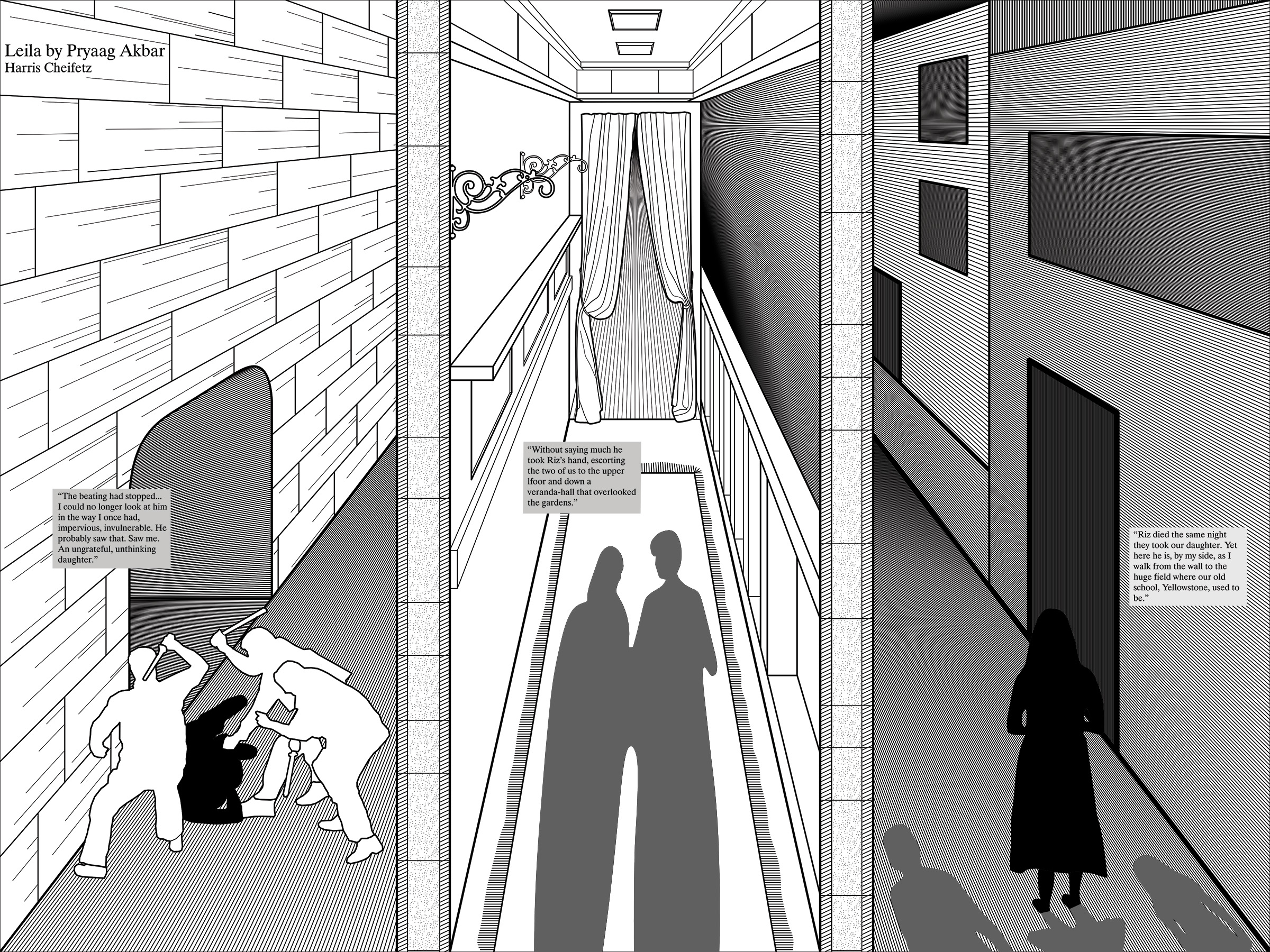


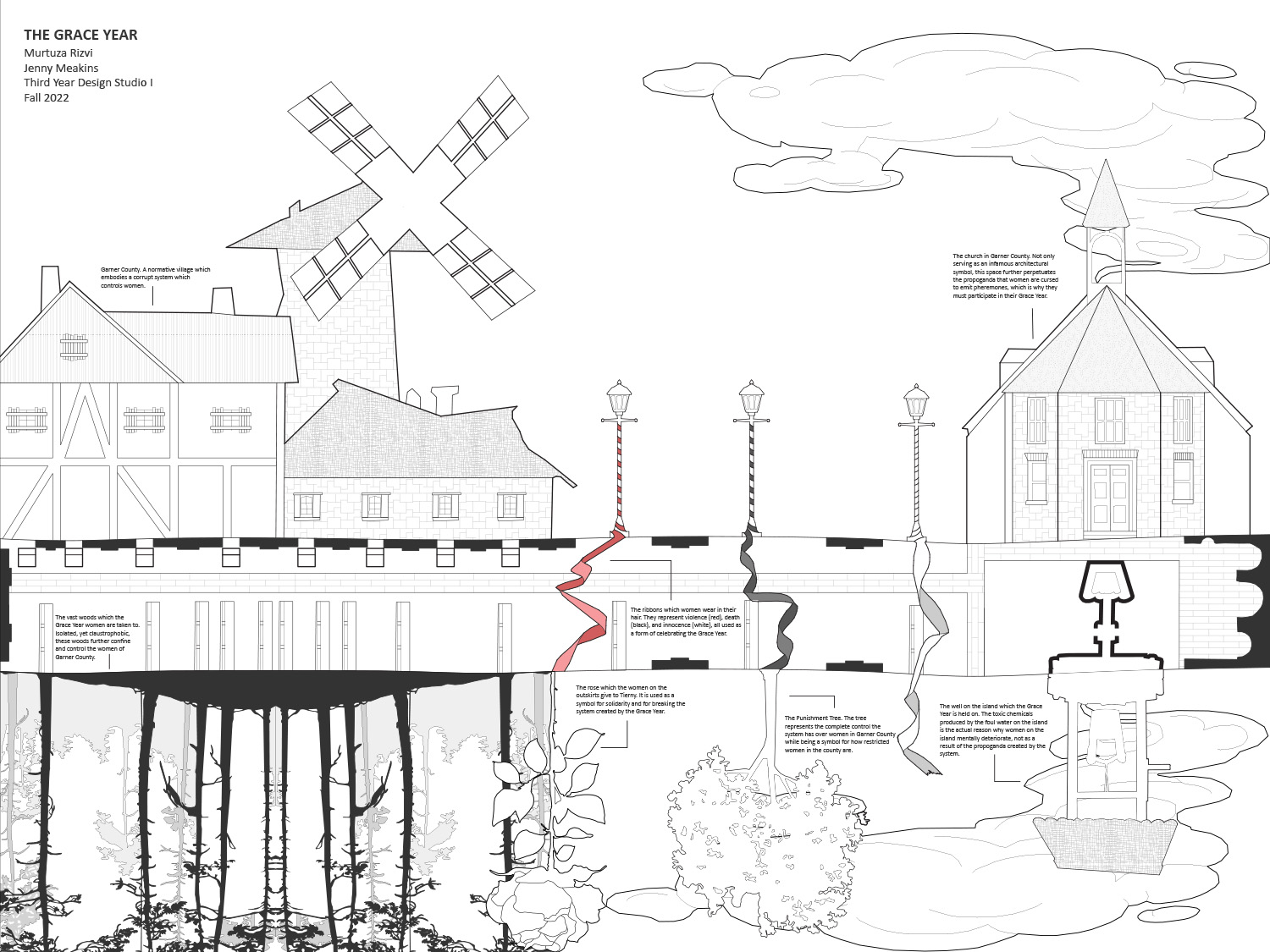
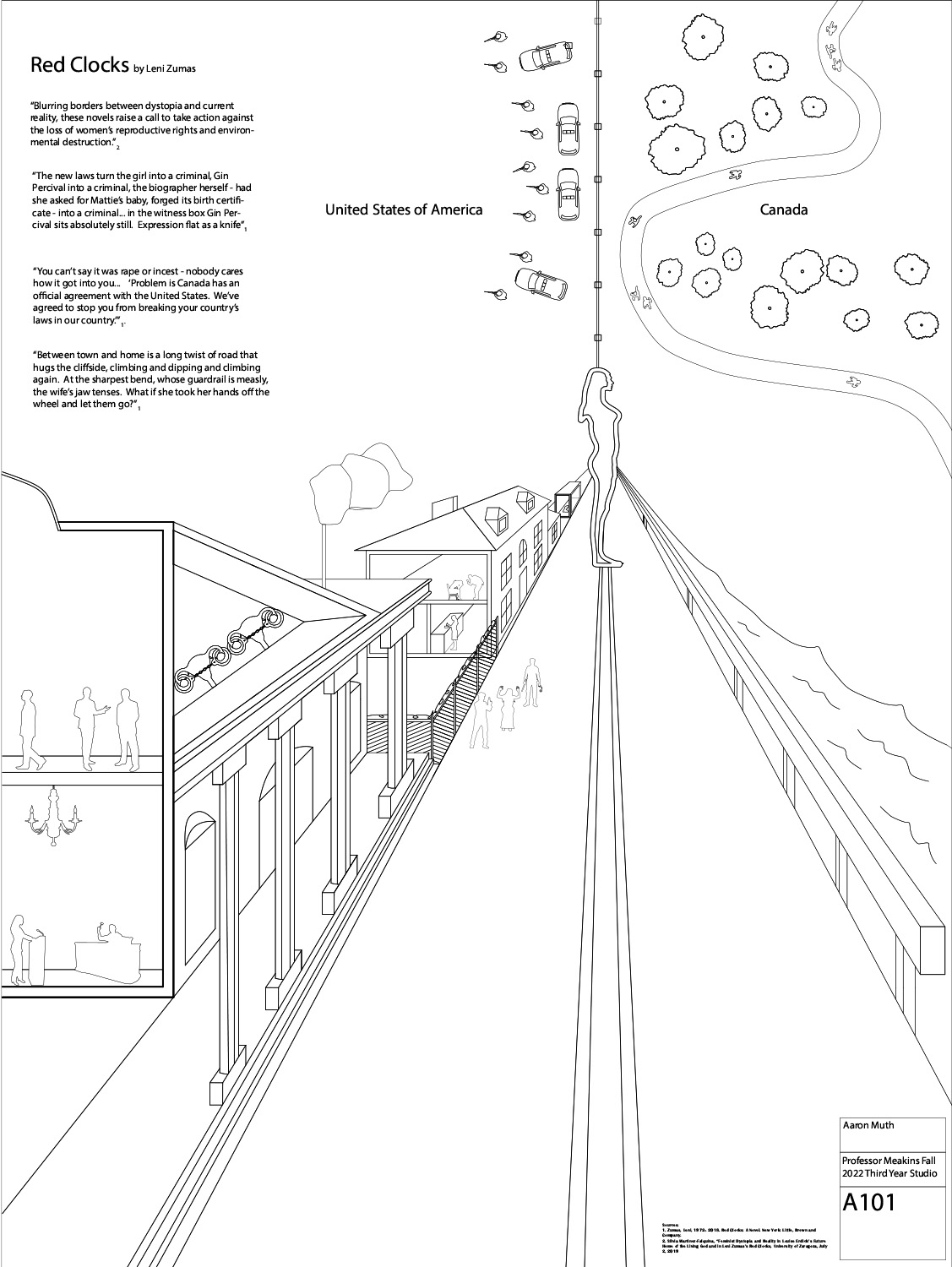
Taking from the spatial analysis of scenarios and scenes from the previous assignment, identify a “real” version. Space is the key construct in this analysis, who and what are the elements that shape the reality of control? Think of space as defined by experience and perception, freeing it from enclosure or ideas of interior and exterior. In this way, we may consider architectural elements (door, wall, window, etc) as objects rather than part of the architecture of a specific room; space is more fluid and relies on signs and the senses.
Through this research students analyze the architecture/space as well as systems (political, economic, cultural) in order to develop a working knowledge of the forces at work.

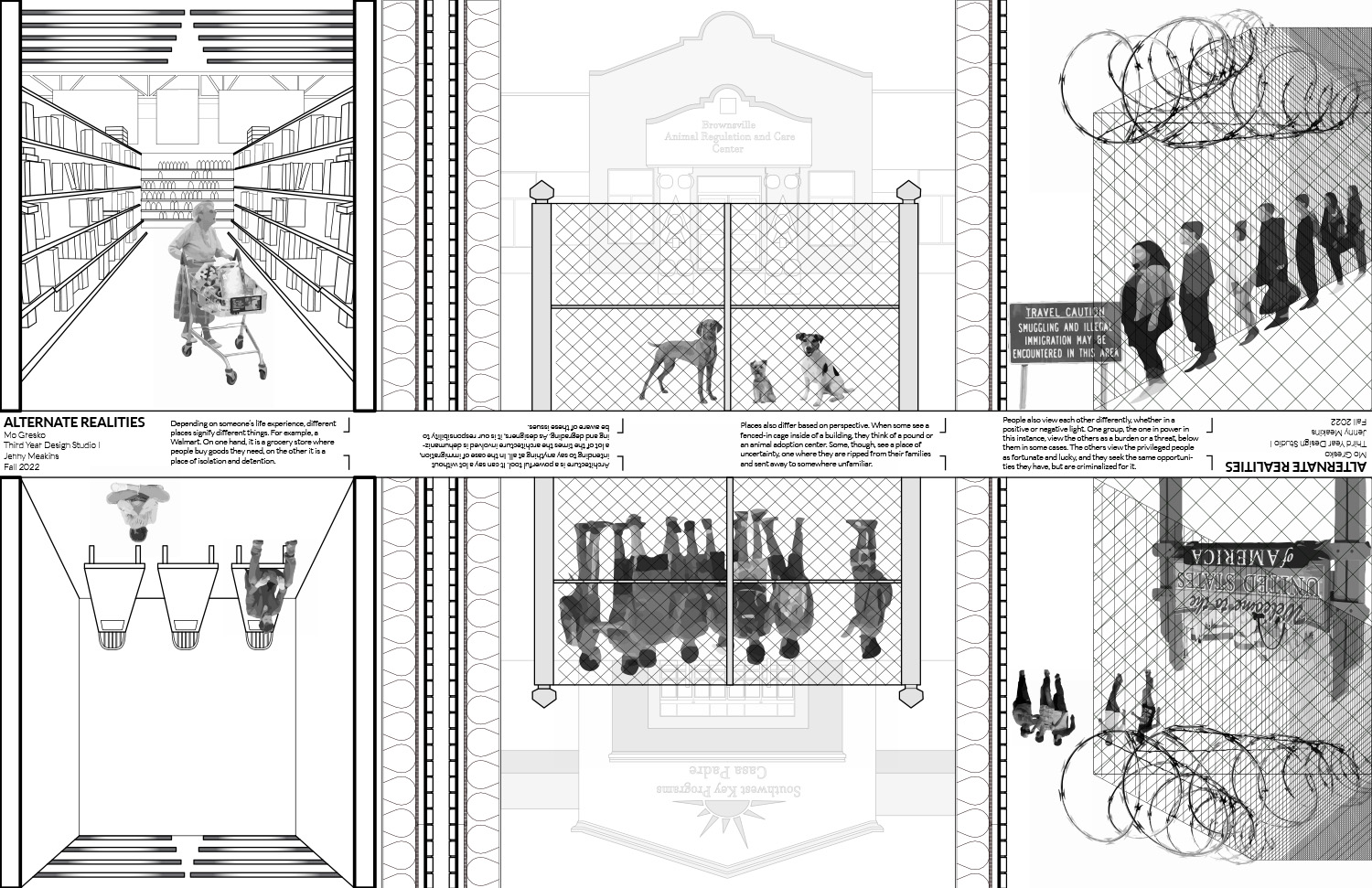

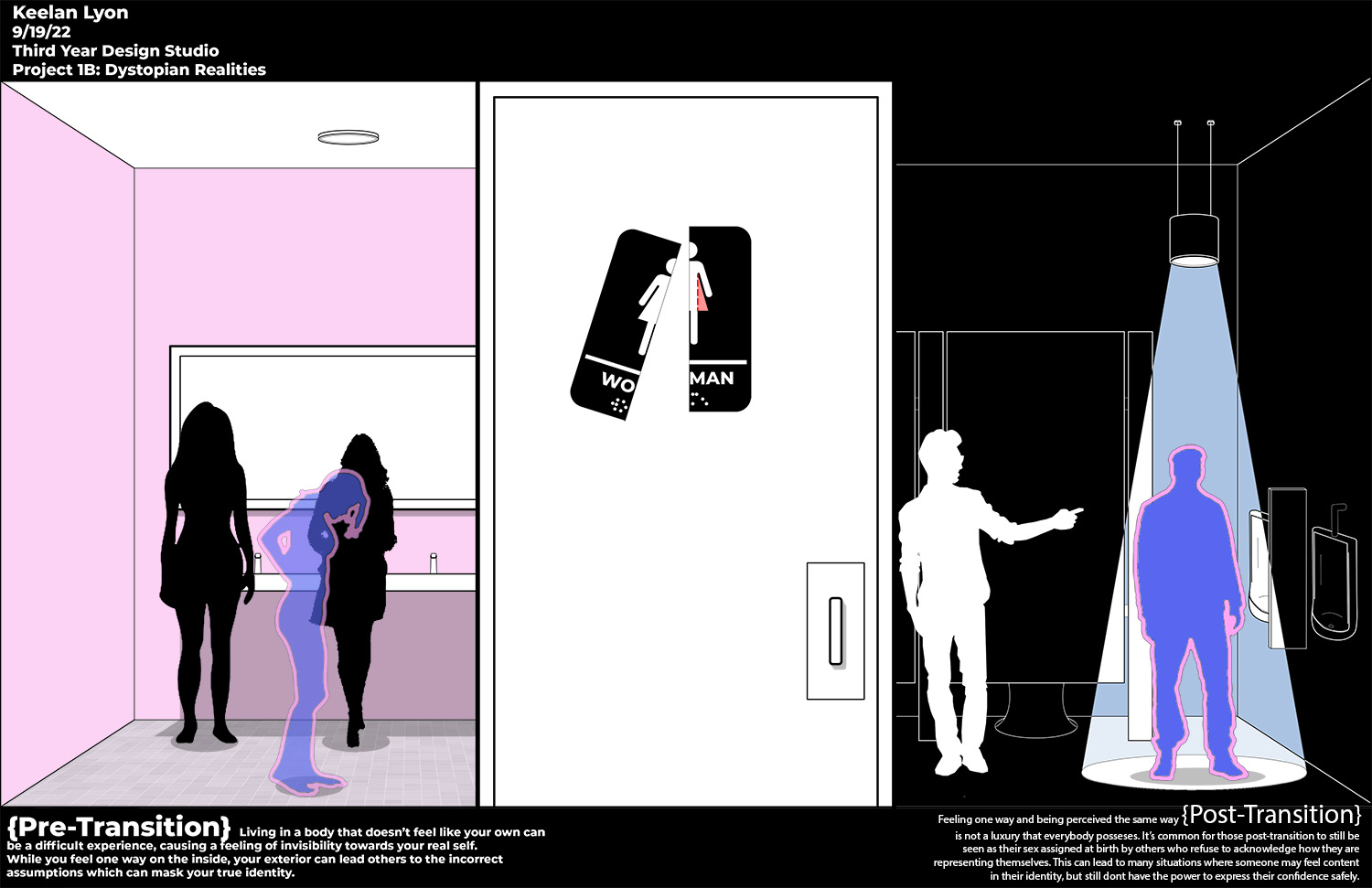

Project 02
Reflecting on what they have experienced and learned from the previous assignments (and life), students fabricated a narrative wearable construction. As space helps to control, empower, and regulate the body, so too does the body define space, boundaries, and movement; each is in constant feedback. Think about a time/place/event, or series of events, where you were physically uneasy, vulnerable, uncomfortable. What were the circumstances? Was it the people around you? The space itself? Previous experiences?
Construct a wearable response to this scenario, what could you wear to protect, redefine, or assert the body? The concept must be rooted in the theory and history we have been studying; collect and research additional perspectives on the body and clothing that could support your perspective.




